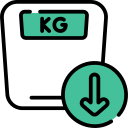Q. How do you create a wellness plan?
Doctor Answer is medically reviewed by SecondMedic medical review team.
Creating a comprehensive wellness plan involves several steps to ensure that the program is well-designed, effectively implemented, and capable of addressing the diverse well-being needs of your employees. Here's a step-by-step guide to help you create a wellness plan:
Assessment of Needs:
Conduct surveys, focus groups, or interviews to understand the specific wellness needs and preferences of your employees.
Analyze existing data, such as health metrics and absenteeism rates, to identify areas that require attention.
Set Clear Objectives:
Define clear and achievable wellness goals that align with both employee needs and organizational objectives.
Ensure that objectives are specific, measurable, attainable, relevant, and time-bound (SMART).
Gather Resources:
Allocate budget and resources for the wellness program, including staffing, tools, materials, and external partners (if needed).
Identify potential vendors or experts who can contribute to various aspects of the program.
Design Wellness Components:
Based on the assessment, select a range of wellness components that address physical, mental, emotional, and social well-being.
Ensure variety to cater to different interests and preferences.
Create a Program Timeline:
Develop a timeline that outlines the phases of program implementation, including launch, ongoing activities, and assessment periods.
Develop Communication Plan:
Create a communication strategy to inform employees about the wellness program, its benefits, and how they can participate.
Use multiple channels like emails, posters, and meetings to raise awareness.
Launch the Program:
Hold a kick-off event to introduce the wellness program to employees.
Highlight the program's goals, benefits, and available resources.
Provide Education and Training:
Offer workshops, webinars, and training sessions on wellness topics to educate employees.
Equip them with knowledge and skills to make healthier choices.
Engagement and Participation:
Promote active participation through challenges, competitions, and incentives.
Encourage team involvement and create a sense of friendly competition.
Data Collection and Analysis:
Collect data on participation rates, outcomes, and employee feedback.
Use analytics to measure the impact of the program on employee well-being and organizational metrics.
Adjust and Refine:
Regularly review program data to identify successful components and areas for improvement.
Adjust the program based on feedback and changing employee needs.
Evaluate and Celebrate Success:
Assess the achievement of wellness goals and objectives.
Celebrate successes, recognize participants, and share positive outcomes with the organization.
Related Questions
-
What are the symptoms of breast cancer? | Secondmedic
-
How do I perform a breast self-exam? | Secondmedic
-
What is breast reconstruction, and can it be done after a mastectomy? | Secondmedic
-
Breast Surgery What are the symptoms and signs of mastitis?
-
What is the difference between a swollen lymph node and a cyst in the armpit? | Secondmedic











